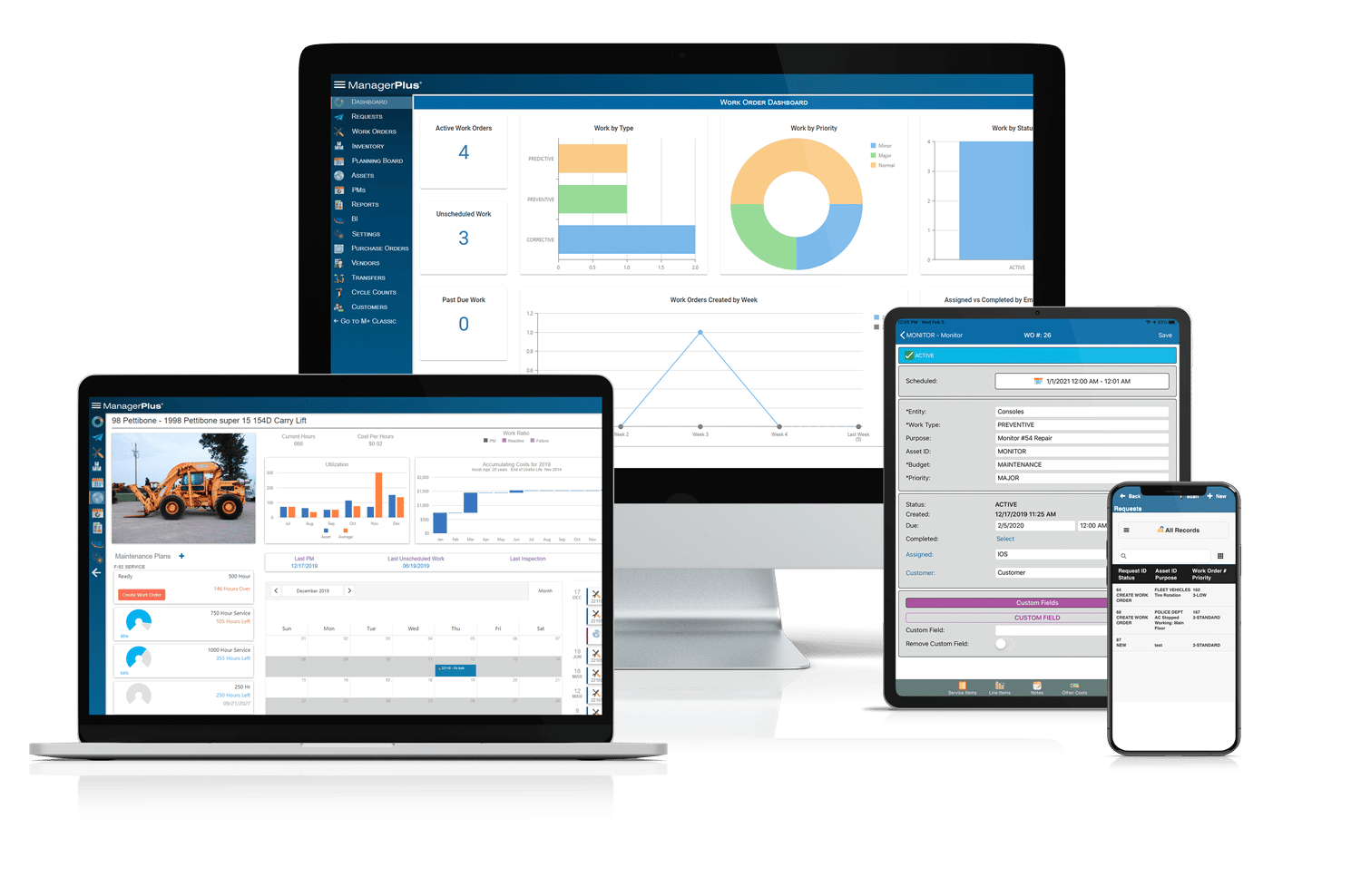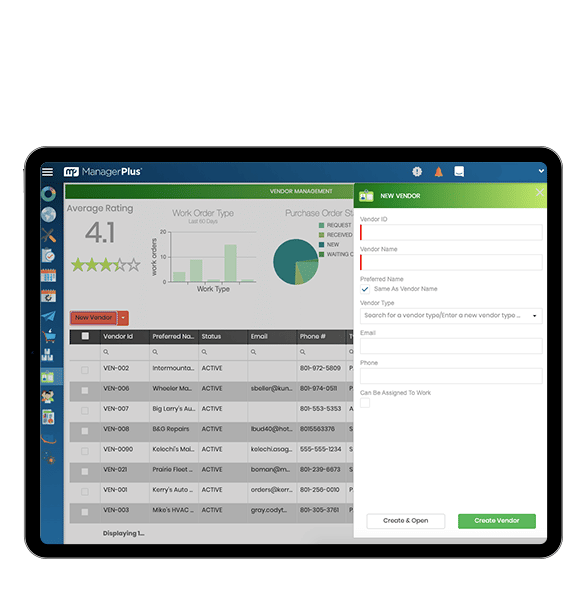Upfitting your fleet vehicles can have lasting benefits to your fleet operations, but only if you do it correctly.
If not, it can be devastatingly expensive.
Let’s look at what you should consider when looking to upfit your fleet.
What is vehicle upfitting?
Upfitting fleet vehicles is a process where fleet owners upgrade or customize their vehicles to meet the specific needs of their drivers and organization. This can be something as simple as adding a toolbox into the bed of a truck to refitting the entire vehicle to make it lighter and more fuel-efficient.
Upfitting is essentially the process of installing features on a factory vehicle to help the driver of the vehicle do their job more efficiently. This almost always results in greater fuel efficiency, safety, and cost savings in the long run for fleet operators as well.
Benefits of upfitting
There are many benefits to upfitting vehicles. Some of the biggest ones are:
- Lower total cost of ownership (TCO)
- Increased productivity
- Higher driver retention
- More ROI
Lower the cost of your vehicles over the long term
For any fleet operator, knowing the total cost of ownership (TCO) for your vehicles is vital to not just knowing when it’s time to replace them, but also for the overall success of your organization. Properly upfitting your vehicles can have a big impact on their overall TCO.
Many times upfitting can significantly lessen the weight of the vehicle, making it much more fuel efficient. This is especially true of work trucks and vans that are heavier vehicles to begin with.
Taking time to plan out the upfits for your vehicle and consider the needs of your drivers and the organization as a whole can help lower your overall costs.
The trick is not to take a one-size-fits-all approach to upfitting your vehicles but rather consider the long term when you’re looking to make upgrades and improvements. Consider how the drivers of your vehicles might change and that you’ll eventually want to sell the vehicle down the road. Make sure that whatever upfitting you decide to do will help maintain or increase the value of the vehicle.
The best way to determine your TCO, and make sure any upgrades you perform to your vehicles lower your TCO over the life of the vehicle, is by using fleet management software to help you calculate all those numbers.

Make your drivers more productive and efficient
As the needs and demands of customers continue to evolve, contractors and fleet operators are having to be more agile in the services that they provide. Choosing the right upfit for your vehicles can make your drivers more productive on the road.
Maybe your drivers need more shelving space or need a space to fit new equipment. Even things like ergonomic upgrades such as extra steps, grab handles, or even better, more comfortable seats can help your drivers be more efficient. Plus, the added benefit of extra comfort while in the vehicle helps keep them safe and healthy.
Keep your best drivers around longer and gain an edge in recruiting
It’s no secret that fleet operators in most industries are having a hard time finding drivers, and investing in upfitting can go a long way to keeping quality drivers from wanting to leave as well as giving you an edge when recruiting new drivers.
If drivers can see that you care about them and are willing to invest in the tools they need to help them do their jobs well while keeping them safe and comfortable, they’re much more likely to want to work for you. This also lowers the costs of hiring and training new drivers.
Get more ROI from your vehicles
No matter what industry you’re in, improving the return on investment (ROI) for your fleet is something every fleet manager can relate to as it’s often one of the most important metrics that executives want to track. Investing in the right upgrades and improvements to your vehicles can drastically increase the amount of value you get from them.
Upfitting can help you reduce costs related to purchasing, operating, maintaining, and fueling your vehicles, but it also helps you avoid accidents and insurance claims.
Examples of upfitting
Upfitting a vehicle can take many different forms but some of the most common ones are:
- Shelves
- Racks and hooks
- Storage cabinets
- Lights
- Winches
- Cranes
- Cab protection
Every company is different and requires different things from their vehicles, so it’s important to make sure that you make the right upgrades to get the most return out of your investment. It’s a good idea to talk with your drivers when you’re looking to make upgrades to see what things they need to make things safer and more efficient.

When you’re looking at upfitting, keep in mind the 85% rule, which is related to a vehicle’s gross vehicle weight ratio (GVWR). The rule is that vehicles should not operate at more than 85% of their GVWR because it can lead to higher maintenance costs and a shorter life cycle.
Tips for upfitting
While some fleets require specialized upfits to meet their needs, many companies have still not invested in even the most basic upgrades. For all the reasons listed above and more, if you haven’t looked into upfitting your fleet, there’s no time like the present.
Although the process of upfitting can be expensive and a bit complex if done incorrectly, with the right approach it can be a smooth experience for everyone involved. Long before you begin making phone calls to upfitters, make sure you:
- Do your research to find out what upfits you need and find the best local upfitting companies in your area.
- Develop a plan for how you want to take on the project, including a timeline with milestones and a deadline.
- Know your budget. Remember, you don’t want to just look for the lowest possible prices. Doing the math to determine your TCO might give you more freedom in your upfitting budget than you think.
Once you’ve done your research, planned out your approach, and determined your budget, it’s time to begin upgrading your vehicles.
Pick the time that works best for your company
Most often when companies are looking to upfit their fleets, they simply find a time in their schedule where they can get the upgrades done without impacting too much of their business.
However, in light of recent global events, supply chains are becoming heavily restricted across a multitude of industries, so there’s a good chance that many of the parts your vendors needs to upfit your vehicles are either unavailable or cost prohibitive.
If you’ve been hesitating about upfitting your fleet, it’s probably a good idea to move forward as parts and supplies are most likely going to get much more limited over the next several months.
Maximize your driver’s efficiency
When considering what upgrades to make to your vehicles, first and foremost you should look at things that will make your drivers safer. Things like more steps near cargo spaces, better grab handles, and easier drop-down racks for ladders are all things that can keep your drivers safe and comfortable.
You might think that driver comfort isn’t too high on your priority list, but your drivers spend quite a bit of time in and around their vehicles. More ergonomic working conditions for them mean fewer sore muscles, aches and pains, and even injuries which keeps insurance costs low and helps you avoid fines and litigation.
As for what can help your drivers be more efficient, ask them. Talk to your drivers and find out what kind of upgrades to their vehicles could make their tools more accessible or their workspace more efficient. Maybe the tools they use the most only fit in the storage cabinet that’s on the passenger side of the vehicle. Simply moving it to the driver’s side might make their tasks go by much faster.
Remember, no two drivers and no two vehicles are exactly the same. You might have one driver that is more skilled at one type of job than the others so he needs different tools for his work. Maybe the area you work in has harsher weather that you need to prepare for. Whatever the case, make sure you look at making each individual driver as efficient as possible.
Customizing your upfits is not as expensive as you might think and the overall improvements you gain in the long run more than make up for the initial investment.

Use fleet management software to manage your upfitting
You should already be using good fleet management software to manage your fleet, especially for your preventive maintenance program, so it should be fairly easy to use it to manage your upfitting as well. With cloud-based software, you can assign maintenance and upfitting tasks from anywhere, which is especially helpful in managing a fleet.
If your program has mobile applications, your drivers and technicians can perform inspections and update work orders from their smartphones or tablets without having to deal with spreadsheets or emails to keep everyone updated.
The Vendor Portal in the ManagerPlus fleet management platform helps you seamlessly manage vendor works by letting you generate and assign them from within the same software you use to manage your internal work orders. And there are no extra logins or licenses required. The vendors get a link to their work order and any additional information they need, and you can track the progress, request photos and signatures, and even have them upload an invoice all from one place.
Executive summary
Upfitting your commercial fleet can improve your driver efficiency, increase the value of your vehicles, and give you a greater return on investment over the course of your vehicle’s life cycle. While it can be a complex process, it doesn’t have to be difficult.
When looking at upfitting your fleet, be sure to look for ways to:
- Schedule carefully – global supply chains are being strained, now might be the best time to move forward.
- Maximize driver efficiency – no two drivers are the same so make sure each driver has the best equipment for their jobs better will increase their productivity. Investing more in your vehicles upfront can have greater payoffs down the road.
- Manage the process efficiently – if you’re not already using fleet management software to help you get more out of your fleet, now’s the best time to start. Your software can help you manage the upfitting process start-to-finish.
There’s no better time than now to consider upfitting your commercial fleet and make sure you have the right tools to get the job done quickly and efficiently. Schedule a demo of ManagerPlus today to see for yourself how fleet management can help you.


